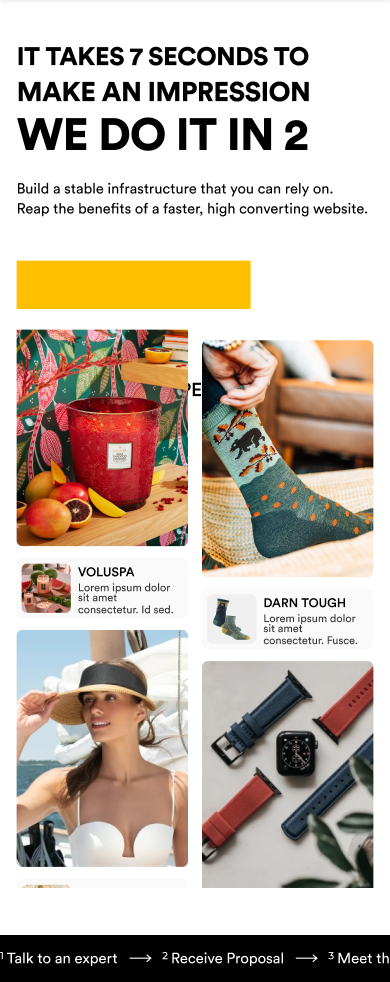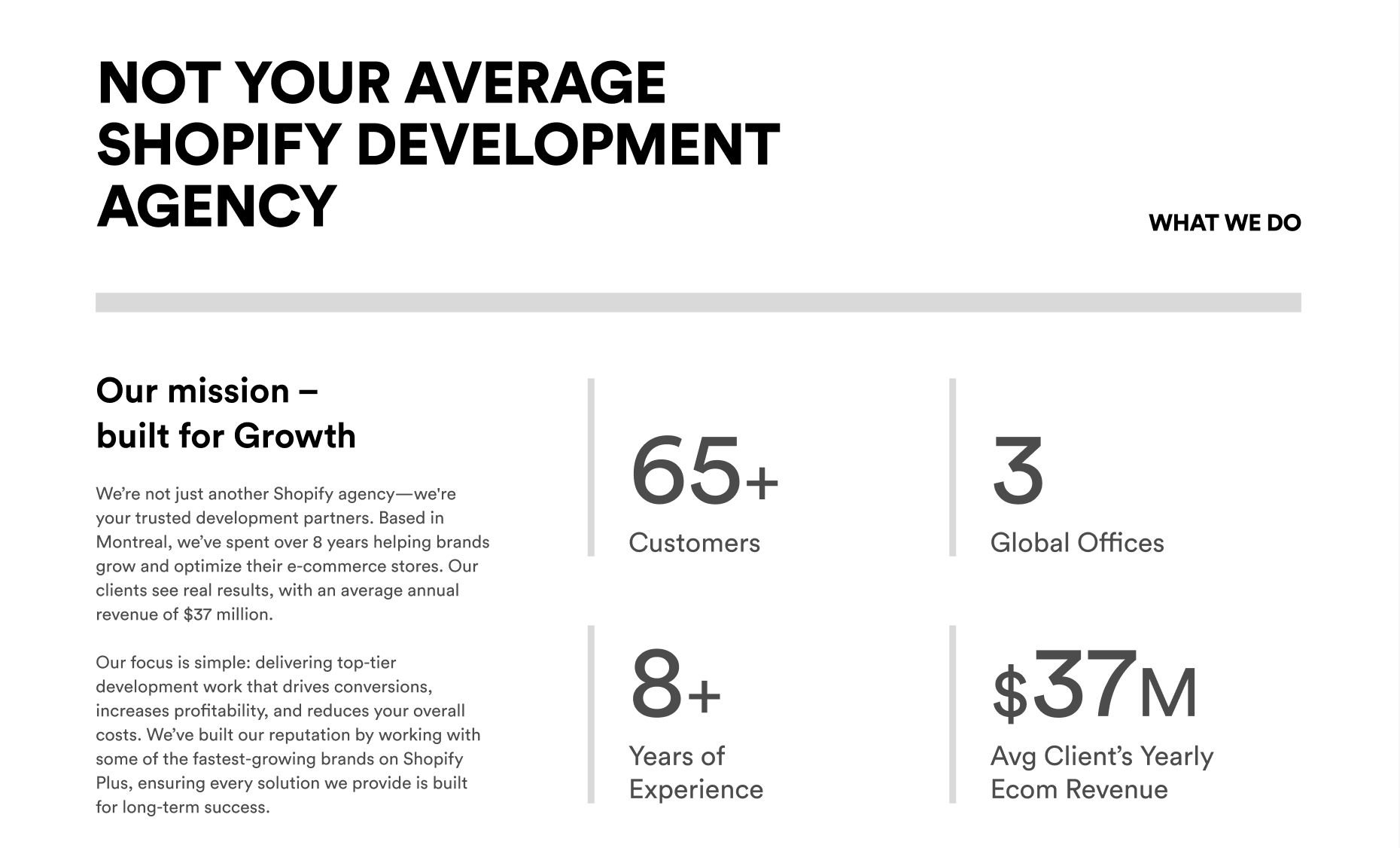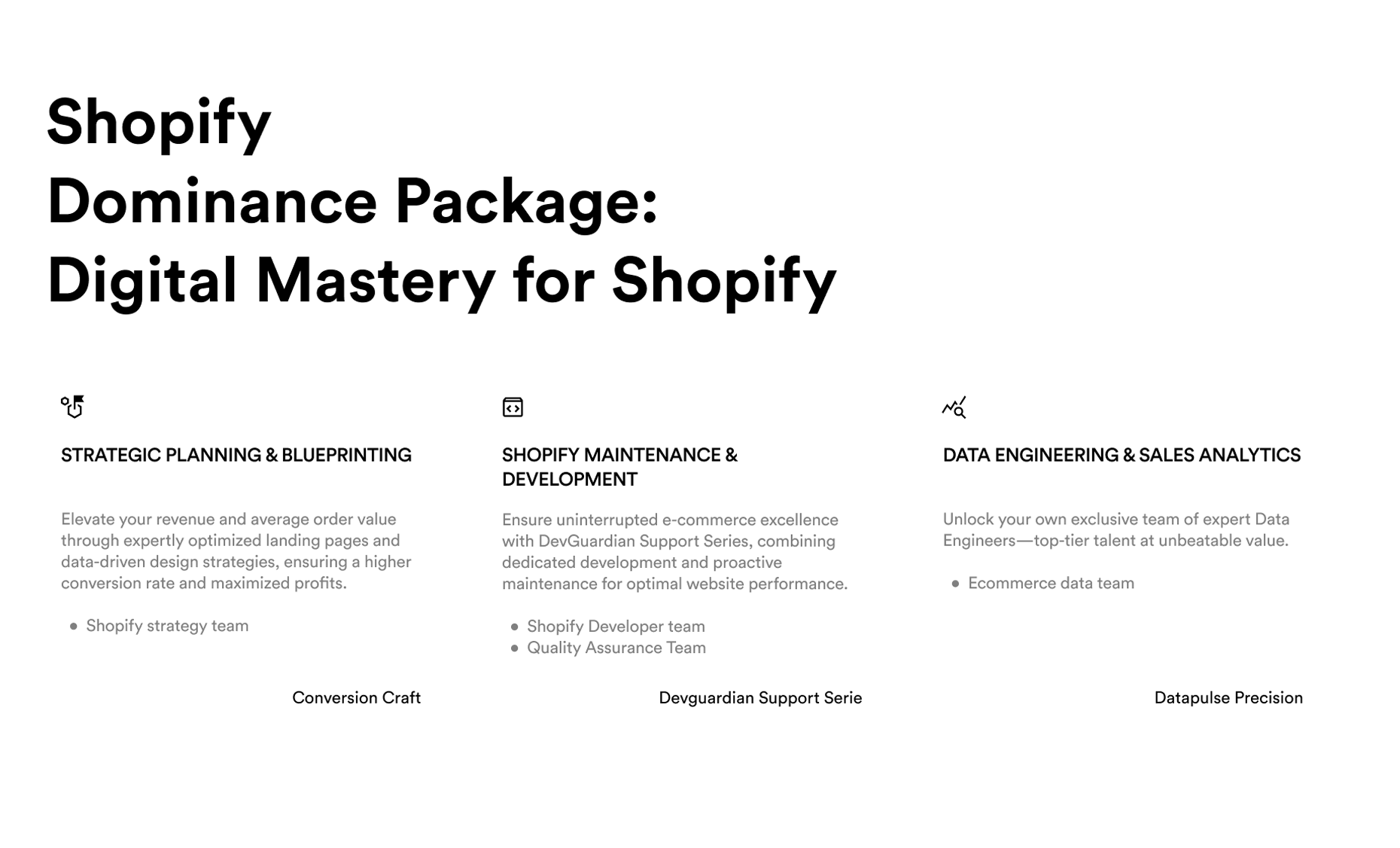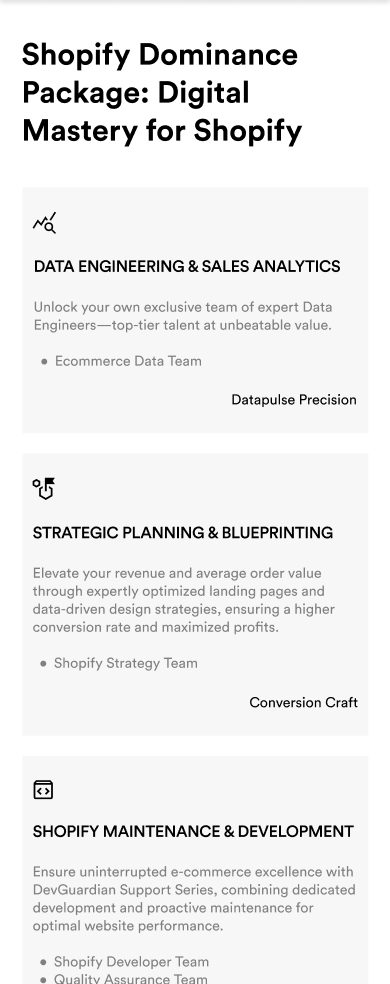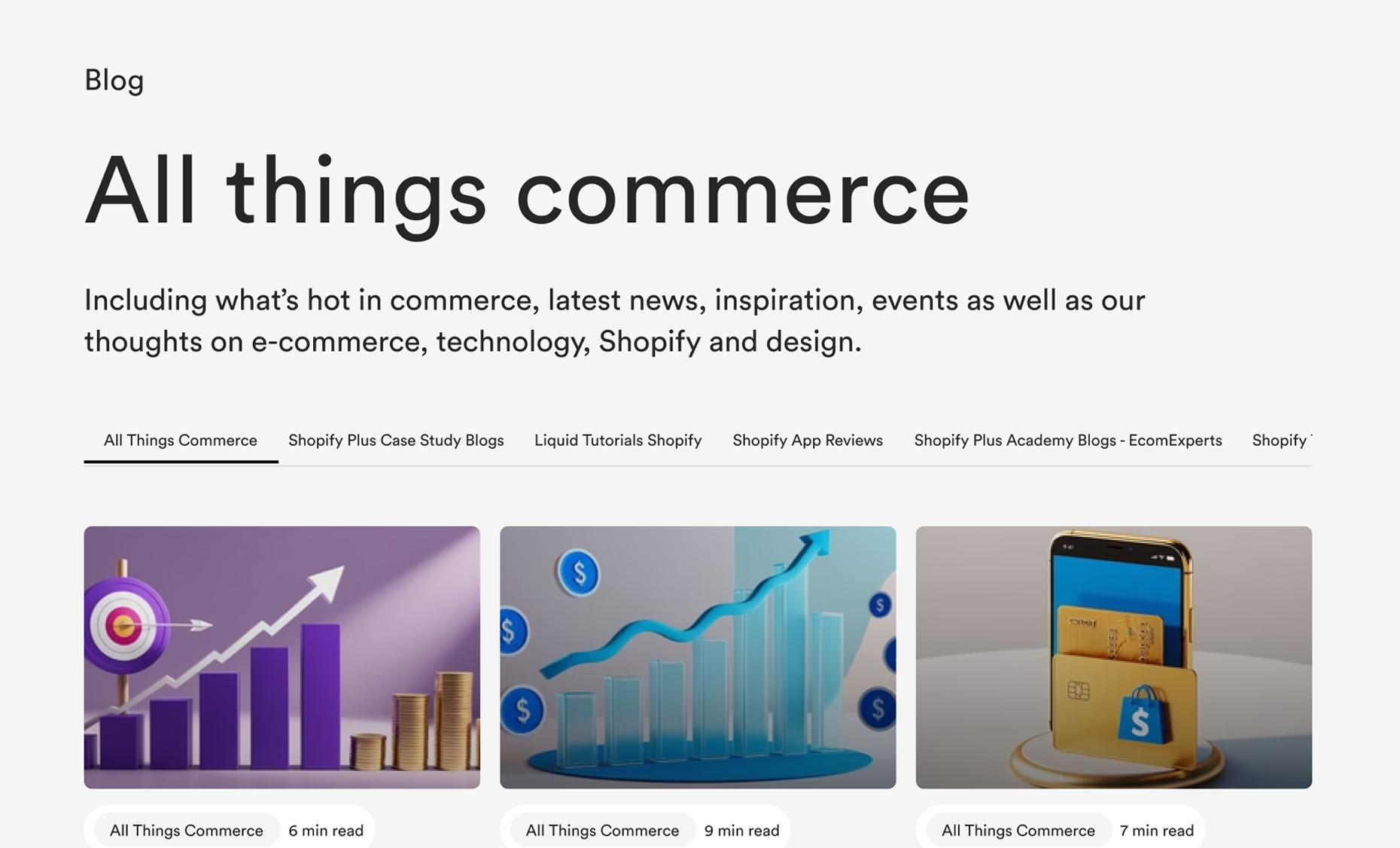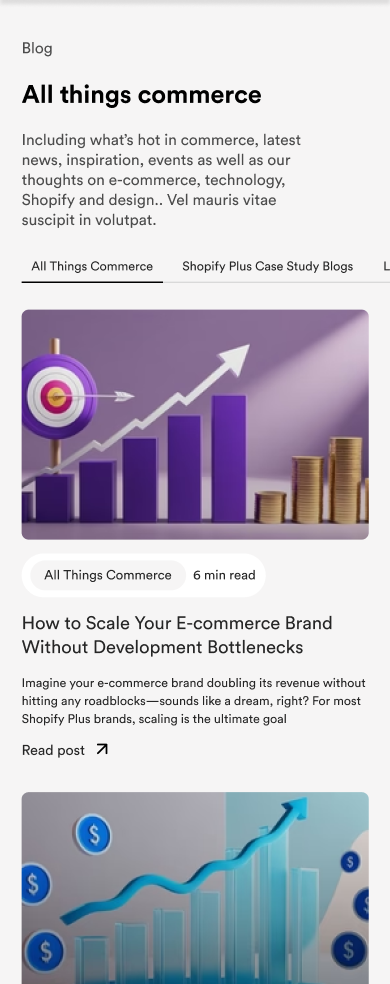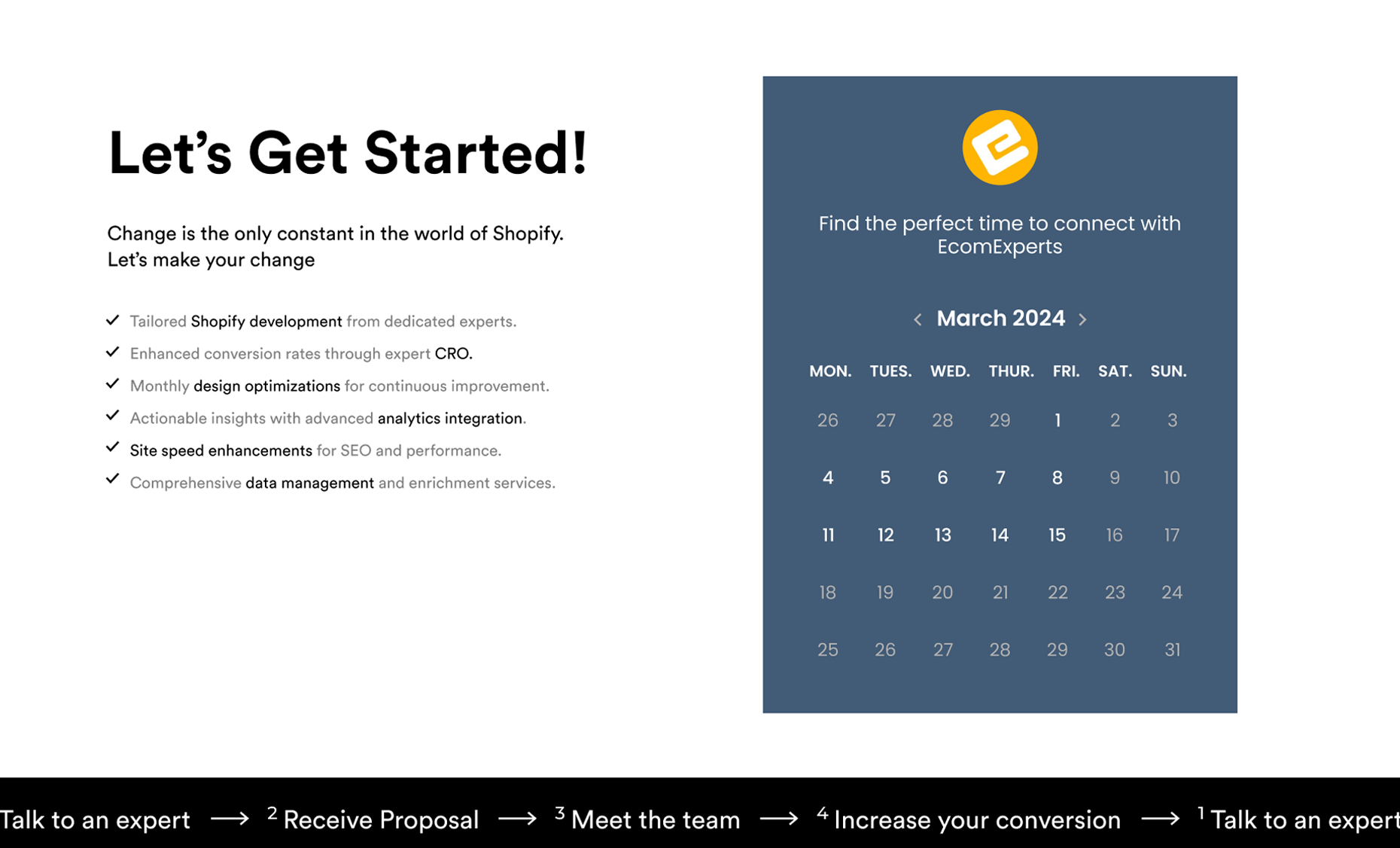Dropshipping has long been touted as a low-risk, high-reward business model, with countless “success” stories popping up across social media. But fast-forward to 2024, and the landscape looks very different.
While dropshipping still attracts many entrepreneurs eager to start their own online business with minimal upfront costs, the reality is that it’s not the golden opportunity it once was.
In this blog, we’ll explore whether dropshipping is still worth your time, effort, and money in 2024.
The truth? Dropshipping is far from dead, but it’s more complicated than ever—and its challenges are mounting.
What Is Dropshipping? (Quick Refresher)

At its core, dropshipping is a retail fulfillment method where the store owner doesn’t hold inventory or manage the shipping of products.
Instead, when a customer places an order on a dropshipping store, the store owner purchases the item from a third-party supplier, who then ships the product directly to the customer.
This model allows entrepreneurs to sell products online without worrying about warehousing or logistics.
How It Works:
- Step 1: A customer places an order on your online store.
- Step 2: You purchase the product from a supplier or wholesaler (often at a lower cost).
- Step 3: The supplier ships the product directly to your customer under your store's branding.
It’s an appealing model because it cuts out the need for the store owner to handle inventory, allowing for a lower initial investment.
Pros of Dropshipping:
- Low Upfront Investment: You don’t need to buy products in bulk, rent a warehouse, or handle shipping. This makes it easy to start, even if you have limited capital.
- Ease of Entry for Beginners: Dropshipping is a relatively straightforward business model for those new to e-commerce. You can set up a Shopify store and link to apps like Oberlo or Spocket to source products and get started quickly.
Cons of Dropshipping:
- Lack of Control Over Inventory and Shipping: Since you rely on third-party suppliers, you have no control over the quality of the products, the shipping times, or any stock issues. If the supplier makes a mistake, it’s your brand that suffers.
- Thin Profit Margins: Because you’re purchasing from suppliers at a marked-up price and dealing with additional costs like advertising, profit margins are typically slim. This is especially true when you factor in increasing customer acquisition costs.
The Rise and Current State of Dropshipping

Let’s start by acknowledging the massive growth dropshipping has seen over the past decade. It became popular because of its low barrier to entry and minimal investment risk.
Entrepreneurs were drawn to the idea of running an e-commerce store without handling inventory, packaging, or shipping—everything was outsourced to a third-party supplier.
But fast-forward to 2024, and we’re seeing a very different picture.
Dropshipping Market Saturation
One of the biggest issues with dropshipping in 2024 is that it has become oversaturated.
As more people jumped on the bandwagon, the market became flooded with identical products, mostly sourced from the same platforms like AliExpress or Oberlo.
The result? Dropshipping stores started blending into one another, with little to no brand differentiation.
In fact, a 2023 report by Grand View Research projected that the global dropshipping market size would grow to $196.78 billion by 2030, up from $167.55 billion in 2022.
Despite this growth, the report highlights how increased competition is making it harder for new entrants to stand out.
Declining Customer Trust in Dropshipping Stores
Another major shift in the dropshipping landscape is that customers are catching on.
With the rise of platforms like Amazon and fast-shipping options from more established e-commerce brands, customers have grown weary of long shipping times and poor-quality products often associated with dropshipping stores.
According to an e-commerce survey, 46% of customers said they have abandoned carts because of shipping concerns, and many have become more selective about the stores they buy from, expecting faster delivery and better customer service .
This shift in customer behavior presents a huge challenge for dropshipping businesses, as customers are less likely to take a chance on a store they don’t know, especially if it lacks solid branding or trustworthy reviews.
Dropshipping’s Reputation Problem
Let’s address the elephant in the room—many people now question whether dropshipping is a scam. The answer is no, dropshipping itself isn’t a scam. But with so many fly-by-night businesses popping up, selling low-quality products with poor customer service, the perception of dropshipping has taken a hit.
Even popular online forums like Reddit have seen discussions around the “death of dropshipping” due to the overwhelming number of businesses that fail to deliver what they promise .
The Challenges of Dropshipping in 2024

So, is dropshipping dead? Not quite—but it’s definitely not the easy-money dream that many believed it to be.
The biggest hurdle that dropshipping businesses face in 2024 is market saturation, alongside customer expectations that have evolved far beyond what the traditional dropshipping model can offer.
1. Oversaturation and Competition
Back in the early 2010s, dropshipping was a relatively novel concept, and early adopters saw big rewards.
But in 2024, nearly everyone is doing it, which has made it significantly harder for new dropshipping stores to stand out.
Many store owners use the same suppliers, sell identical products, and rely on similar marketing strategies—creating a sea of sameness.
- Impact on New Entrants: New dropshipping stores often find themselves competing with thousands of others selling the exact same product. Without a unique value proposition or standout branding, it’s nearly impossible to differentiate your store.
- Ad Costs are Skyrocketing: With more businesses using platforms like Facebook and Google Ads to push their products, the cost of acquiring a customer has increased dramatically.
This rising competition makes it crucial for dropshipping entrepreneurs to rethink their strategies.
Simply launching a store and running Facebook ads no longer cuts it—you need a well-defined niche and a strong brand identity to survive in this crowded market.
2. Thin Profit Margins
One of the most talked-about issues in the dropshipping world is low profit margins. The appeal of dropshipping is that you don’t need to carry inventory, but the downside is that your profit margins tend to be slim, typically around 10-30%, depending on the product.
When you factor in rising advertising costs, shipping fees, and payment processor fees, those margins can shrink even further.
- Example: If you sell a $50 product and your supplier charges $35 for the item, you’re left with $15 in gross profit. Subtract advertising costs (say, $10 per customer) and any transaction fees, and you’re barely making a few dollars per sale.
- Challenges with Scaling: Scaling a dropshipping business means selling more products, but with thin margins, the business needs substantial volume to be profitable. And scaling itself can introduce more headaches, like dealing with customer complaints or fulfillment issues.
3. Long Shipping Times and Poor Customer Experience
Dropshipping is notorious for long shipping times, especially when suppliers are based overseas.
In an age where customers expect 2-day delivery thanks to giants like Amazon, waiting 2-4 weeks for a product is a deal-breaker for most.
A study found that 58% of customers now expect faster delivery options, even from small businesses.
Dropshipping stores, particularly those relying on suppliers in Asia, struggle to meet these expectations, leading to:
- High Cart Abandonment: If customers see extended shipping times at checkout, they’re more likely to abandon their cart.
- Negative Reviews and Refund Requests: Long shipping times combined with inconsistent product quality lead to poor customer satisfaction. Dropshipping businesses often face negative reviews and high refund requests, which can kill their reputation.
4. Supply Chain Issues
Relying on third-party suppliers for fulfillment comes with its own set of risks. Dropshipping entrepreneurs have little to no control over the inventory, product quality, or shipping process, leaving them at the mercy of their suppliers.
- Out-of-Stock Products: A supplier may run out of stock without notifying you, leaving you scrambling to refund customers or find alternative products.
- Quality Control Issues: You never see the products you’re selling, which means you can’t guarantee quality. A sudden dip in product quality could result in high return rates and a damaged reputation.
The reality is that these issues can severely impact a dropshipping store’s growth potential.
In contrast, businesses that invest in inventory and fulfillment have greater control over the customer experience and product quality, leading to stronger brands and higher long-term success rates.
5. Dropshipping’s Reputation Problem
Dropshipping stores have earned a bad reputation in recent years due to poor customer experiences, cheap-looking websites, and overly aggressive marketing tactics.
Many customers have been burned by low-quality products and long wait times, leading to a general distrust of the dropshipping model.
- Perception as a Scam: Although dropshipping isn’t inherently a scam, the business model has been tarnished by unethical entrepreneurs who sell subpar products or fail to deliver entirely. This has led many potential customers to question the legitimacy of dropshipping stores altogether.
The challenges we’ve discussed aren’t necessarily deal-breakers, but they show that dropshipping in 2024 is not for the faint of heart.
Is Dropshipping Still Worth It in 2024?

At this point, you’re probably wondering—is dropshipping still a viable business in 2024? The answer isn’t a simple yes or no.
It all comes down to your goals, your ability to adapt, and how well you can address the challenges that we discussed earlier.
For many, dropshipping can still serve as an entry point into e-commerce. It's a low-risk business model, making it an attractive option for those who want to start a business without investing heavily in inventory or warehousing.
However, the days of effortlessly launching a store and making thousands overnight are long gone. The landscape has changed, and so have customer expectations.
Why Dropshipping Might Not Be Worth It Anymore
For the majority of new entrants, dropshipping in 2024 might feel like an uphill battle. Here’s why:
- Market Saturation: With thousands of stores selling the same generic products, it’s incredibly difficult to stand out. Unless you have a niche or a unique approach to branding, it’s hard to differentiate yourself from the competition. Most new dropshipping stores look and feel the same to consumers, and that’s a problem.
- Low Profit Margins: As mentioned, dropshipping typically has thin margins. This means you need to generate a high volume of sales to make any real profit. And when you factor in rising ad costs, the margins can shrink even further. In a time where customer acquisition costs have skyrocketed (especially on platforms like Facebook), you might find yourself spending more on ads than you’re earning in profit.
- Declining Customer Trust: Consumers are increasingly savvy in spotting dropshipping stores. They’ve been burned by slow shipping times and inconsistent product quality. Today’s shoppers are much more inclined to buy from brands they trust or from larger marketplaces like Amazon, which offer fast shipping and solid customer service.
When Dropshipping Could Still Work
That said, dropshipping isn’t entirely dead. It can still be a worthwhile venture for specific niches and under the right circumstances:
- Finding Unique Products: If you can source products that aren’t oversaturated in the market, dropshipping may still work. Focus on niche markets with fewer competitors where you can build a reputation as an expert in that space. Whether it’s eco-friendly products or unique, custom items, the key is differentiation.
- Test Products Without Inventory Risk: Dropshipping can also work as a product-testing strategy. You can introduce new products to your store without the risk of overstocking or spending on inventory upfront. If a product sells well, you can later choose to stock it yourself and increase your profit margins.
- Scalability Without Overhead: For businesses that are in growth mode but don’t yet want to invest in warehousing or logistics, dropshipping can help you scale your product offerings without the associated overhead.
In essence, dropshipping can still work in 2024, but success requires a more strategic and brand-focused approach.
You need to think beyond the one-size-fits-all model that worked in the past. Strong branding, niche targeting, and excellent customer service are essential to making dropshipping profitable today.
Dropshipping vs. E-commerce Brand: What’s the Better Strategy?

When we think about dropshipping, it’s easy to see why it has such a strong initial appeal for new e-commerce entrepreneurs.
The low barrier to entry, minimal risk, and the promise of earning money online without the hassles of inventory management or shipping logistics seem too good to pass up.
But here’s the catch: while dropshipping can serve as an entry point into e-commerce, it’s rarely a sustainable, long-term strategy for success.
Dropshipping’s Temporary Appeal
Dropshipping offers a fast track to setting up an online store, making it ideal for beginners who want to test the waters without heavy financial commitments.
You don’t need to buy products in bulk or worry about warehousing costs. This allows you to experiment with different product categories and niches, seeing what resonates with customers without upfront risk.
However, as mentioned earlier, dropshipping’s downsides—thin margins, slow shipping, lack of quality control—make it hard to build a lasting, profitable business.
This model works in the short term, but as the market becomes more saturated and customer expectations for speed and quality continue to rise, dropshipping alone becomes harder to sustain.
For most entrepreneurs, dropshipping is a stepping stone, not the final destination. It’s a good way to test products or dip your toes into e-commerce, but for long-term growth, transitioning to brand building is key.
Building a Sustainable Brand
Unlike dropshipping, where you’re dependent on third-party suppliers for inventory and shipping, building a brand means taking control of the entire customer experience—from product development to fulfillment. This approach allows you to:
- Control Quality: When you own your inventory and oversee fulfillment, you can ensure that every product meets your quality standards. This builds trust with your customers, something that’s harder to achieve in dropshipping.
- Create a Unique Brand Identity: Customers today want more than just products—they want to buy into a story. Whether you’re selling skincare or high-end tech accessories, having a clear brand identity, voice, and mission is critical. A well-branded Shopify store with custom themes, logos, and packaging instantly sets you apart from generic dropshipping stores.
- Enhance the Customer Experience: From custom packaging to faster shipping times, building a brand allows you to deliver a memorable experience that turns one-time buyers into loyal customers. Shopify stores, for example, give you the flexibility to customize product pages, add loyalty programs, and create more personalized experiences for your shoppers.
- Better Profit Margins: When you move beyond dropshipping and start controlling your inventory, you can increase your profit margins by purchasing products in bulk or even developing your own private-label products. This makes scaling the business more feasible, especially as your customer base grows.
Comparison: Dropshipping vs. E-commerce Brand
Here’s a quick breakdown of the pros and cons between dropshipping and brand building:
Aspect |
Dropshipping |
Building a E-commerce Brand |
|---|---|---|
| Startup Costs | Low upfront investment; no inventory needed. | Requires investment in inventory, branding, etc. |
| Control Over Experience | Limited control over product quality and shipping. | Full control over product quality, branding, and customer experience. |
| Profit Margins | Thin margins due to third-party suppliers. | Higher margins from direct sourcing and bulk purchasing. |
| Brand Identity | Harder to build a lasting brand without control. | Easier to establish a unique, recognizable brand. |
| Scalability | Difficult to scale due to inconsistent supply chain. | More scalable with direct control over operations. |
| Customer Trust | Low trust due to common dropshipping issues. | Stronger customer trust and loyalty through a branded experience. |
What’s the Better Long-Term Strategy?
In 2024, building a strong, sustainable e-commerce brand is the better long-term strategy. While dropshipping can be a helpful testbed to explore product categories and understand market demand, it’s not a strategy built for the long haul.
If you’re serious about building an e-commerce business that scales, transitioning into a branded store, with a clear identity, strong customer service, and custom product offerings, is the way to go.
And that’s where Shopify excels. Whether you start by testing products via dropshipping or jump straight into creating your own brand, Shopify gives you the flexibility to customize every aspect of your store—from product pages to checkout experiences.
With the help of a Shopify expert, like EcomExperts, you can even transform a basic theme into a fully branded, high-conversion store that meets your unique business goals.
Shopify’s Role in Dropshipping and Brand Building

While dropshipping may seem like a saturated market, Shopify has remained one of the most powerful platforms for both dropshipping and brand-building strategies.
Shopify not only supports entrepreneurs during their initial dropshipping phase but also provides the tools necessary to help e-commerce owners transition into building a sustainable brand.
Let’s break down how Shopify fits into both dropshipping and brand building, and why it’s an ideal platform for evolving your business beyond just selling third-party products.
Shopify Dropshipping: Quick to Start, Easy to Scale (Initially)
One of the reasons Shopify has become synonymous with dropshipping is the simplicity and accessibility it offers for beginners.
With Shopify, entrepreneurs can easily set up their online store, connect with suppliers through apps like Oberlo, Spocket, or Modalyst, and begin selling without worrying about managing inventory or shipping.
Why Shopify is Perfect for Dropshipping:
- Seamless Integration with Suppliers: Shopify’s app ecosystem makes it easy to integrate with dropshipping suppliers. Whether you’re using Oberlo to import products directly from AliExpress or connecting with U.S. suppliers through Spocket, Shopify’s user-friendly interface allows you to start selling within days.
- Low Cost to Get Started: You can build a fully functioning store without heavy investments in products, warehousing, or logistics. This makes Shopify the go-to platform for entrepreneurs testing the waters in e-commerce.
- Scalable Tools: Shopify offers a range of tools that make it easy to scale your store as demand grows. From automated fulfillment apps to marketing tools, Shopify provides everything needed to handle growth in the early stages.
However, despite these advantages, Shopify dropshipping has the same challenges discussed earlier—thin profit margins, longer shipping times, and growing market saturation.
As a result, many store owners quickly realize that relying on dropshipping alone won’t build a long-lasting business.
Shopify for Brand Building: The Evolution Beyond Dropshipping
As dropshipping becomes less viable for long-term success, many Shopify store owners take the next step: building a customized, branded store that offers more control over the customer experience and product quality.
Shopify Plus and Shopify Advanced give you powerful tools to move from a basic dropshipping operation to a full-fledged brand with custom products, better fulfillment, and stronger marketing strategies.
Why Shopify is Ideal for Brand Building:
- Customization Options: Shopify allows you to customize your store’s design and features, helping you create a unique look that aligns with your brand identity. By using Shopify Liquid (its templating language), you can create custom themes, product pages, and unique layouts that go beyond the generic dropshipping feel.
- Private Label and Product Customization: Shopify allows you to work with suppliers or manufacturers to offer private-label products or custom-built items. This increases your margins and helps you develop products that reflect your brand’s identity, rather than relying on generic items from dropshipping suppliers.
- Better Customer Experience: Shopify lets you optimize every part of the customer journey—from product discovery to checkout and post-purchase engagement. You can offer custom packaging, faster shipping through third-party fulfillment providers, and even build loyalty programs with apps like Smile.io or Yotpo.
- Marketing and Automation: Shopify’s marketing integrations, such as Shopify Email or Klaviyo, allow you to automate email campaigns, retarget visitors, and drive customer loyalty—helping you build stronger relationships with your audience. Additionally, SEO tools built into Shopify can help you rank better organically, drawing more traffic to your store without relying on expensive paid ads.
Making the Transition: From Dropshipping to a Branded Shopify Store
One of the best parts about Shopify is that it supports seamless transitions from dropshipping to a branded store.
As you begin to scale, you can gradually introduce custom products, phase out suppliers that don’t meet your quality standards, and improve the customer experience.
You can still use dropshipping to test products or niche ideas, but over time, focusing on brand-building strategies—like private labeling, custom packaging, and faster fulfillment—will position your business for long-term success.
And with Shopify’s scalability, you don’t need to jump ship; you simply evolve with the platform as your business grows.
The Future of Dropshipping in 2025: What to Expect

As we head into 2025, it’s clear that the dropshipping model will continue to evolve—but the question remains: Is it still a viable business model?
While dropshipping is far from dead, it is increasingly becoming an entry-level strategy that’s best used in specific circumstances, rather than a long-term business plan.
The landscape for dropshipping will look quite different in the coming years, and its future depends on how adaptable entrepreneurs are to the challenges and opportunities ahead.
1. Dropshipping Will Still Have a Role, But It’s Niche-Dependent
In 2025, dropshipping will remain useful for those who target specific, underserved niches.
Rather than selling generic products that are easily found on Amazon or other marketplaces, focusing on unique products or customized items within a defined niche could help dropshippers carve out a profitable space.
- Niche Opportunities: Dropshipping will likely thrive in niches where products are not easily available from major competitors like Amazon, or where seasonal products (e.g., holiday decorations) make sense to sell without holding inventory. For example, the health, wellness, and eco-friendly sectors are showing steady growth, which could offer dropshipping opportunities.
2. Hybrid Models Will Become the Norm
Many successful e-commerce brands are adopting hybrid models, where dropshipping is combined with inventory holding for key products.
Dropshipping can be useful for testing new products without the upfront investment, but over time, top-selling products can be moved to in-house fulfillment.
This way, businesses can increase profit margins and provide faster shipping while still benefiting from the flexibility of dropshipping.
- Example: Brands may use dropshipping to test new product lines and reduce risk while expanding their core offerings by holding their best-sellers in-house. This allows them to provide a better customer experience and scale more effectively.
3. Emphasis on Customer Experience
In 2025, consumers are continuing to demand faster shipping times, higher quality products, and an overall better shopping experience.
This is where traditional dropshipping will struggle to compete with e-commerce giants like Amazon and even smaller direct-to-consumer brands.
To thrive, dropshippers will need to improve the customer experience significantly by partnering with suppliers who offer faster shipping and better quality control, or transitioning away from dropshipping entirely.
- Focus on Branding: Dropshipping businesses that can create a unique brand identity, with high-quality products and excellent customer service, will have a better chance of survival. This means transitioning from generic stores to highly customized and branded Shopify stores that offer a tailored shopping experience.
4. The Importance of Automation and AI
The future of e-commerce—and by extension, dropshipping—will be heavily influenced by automation and AI technologies.
Automating inventory management, customer support, and marketing will help dropshipping businesses scale more efficiently.
Shopify already offers various automation tools and apps that streamline processes, but the need for more advanced automation will only grow in the coming years.
- AI for Personalization: Using AI-powered tools for customer segmentation, product recommendations, and targeted marketing campaigns will become a crucial differentiator for dropshipping businesses looking to stay competitive. Shopify’s integration with AI tools like Klaviyo for personalized email marketing can help brands deliver better customer experiences at scale.
5. Dropshipping’s Role in Product Testing
Even in 2025, dropshipping will continue to be a valuable product testing strategy. Businesses can use dropshipping to gauge market interest in new products before committing to large inventory purchases.
This flexibility remains one of dropshipping’s strengths, allowing e-commerce businesses to pivot quickly based on demand and feedback without the financial risk of holding unsold inventory.
- Minimizing Financial Risk: For entrepreneurs looking to minimize financial exposure, dropshipping is a good way to test out new markets or product ideas without the need to invest heavily in stock upfront.
The Final Verdict: Is Dropshipping Worth It in 2025?
While dropshipping isn’t dead, it is evolving. In 2025, the model will likely play a more niche role, serving as a stepping stone for new e-commerce entrepreneurs or as a product-testing method for more established businesses.
However, for those looking to build a sustainable, long-term business, focusing on brand development, customer experience, and direct product control will be the way forward.
Ultimately, the future of dropshipping lies in adapting to changes in consumer expectations, evolving technology, and the growing importance of brand trust and customer loyalty.
If you’re considering starting a dropshipping business, or already have one and want to evolve into a custom Shopify store, working with a Shopify expert like EcomExperts can help you transition smoothly into the next phase of your business.
Frequently Asked Questions: Dropshipping in 2024
1. Is Dropshipping Still Profitable in 2024?
Yes, but it’s increasingly challenging due to market saturation, higher ad costs, and low-profit margins. To be profitable, dropshipping businesses need to focus on niche products, excellent branding, and optimized customer service to stand out from competitors.
2. How Does Dropshipping Work on Shopify?
Dropshipping on Shopify involves selling products without holding inventory. When a customer orders from your store, you purchase the item from a supplier who ships it directly to the buyer. Shopify offers seamless integration with apps like Oberlo and Spocket to automate this process.
3. What Are the Biggest Challenges of Dropshipping in 2024?
The main challenges are market oversaturation, long shipping times, poor product quality control, and thin profit margins. Competition is fierce, and many customers now prefer fast-shipping brands with strong reputations.
4. Can I Start a Dropshipping Store Without Experience?
Yes, dropshipping is often seen as a beginner-friendly business model because it requires low upfront investment and doesn’t need inventory management. However, due to growing competition, you’ll need to develop skills in marketing, customer service, and brand building to succeed.
5. What’s the Difference Between Dropshipping and Building a Brand?
Dropshipping focuses on selling third-party products with minimal control over the product or shipping process, while building a brand involves creating a unique identity, controlling inventory, and offering better customer experiences. Brand-building offers more long-term sustainability and higher profit margins.



